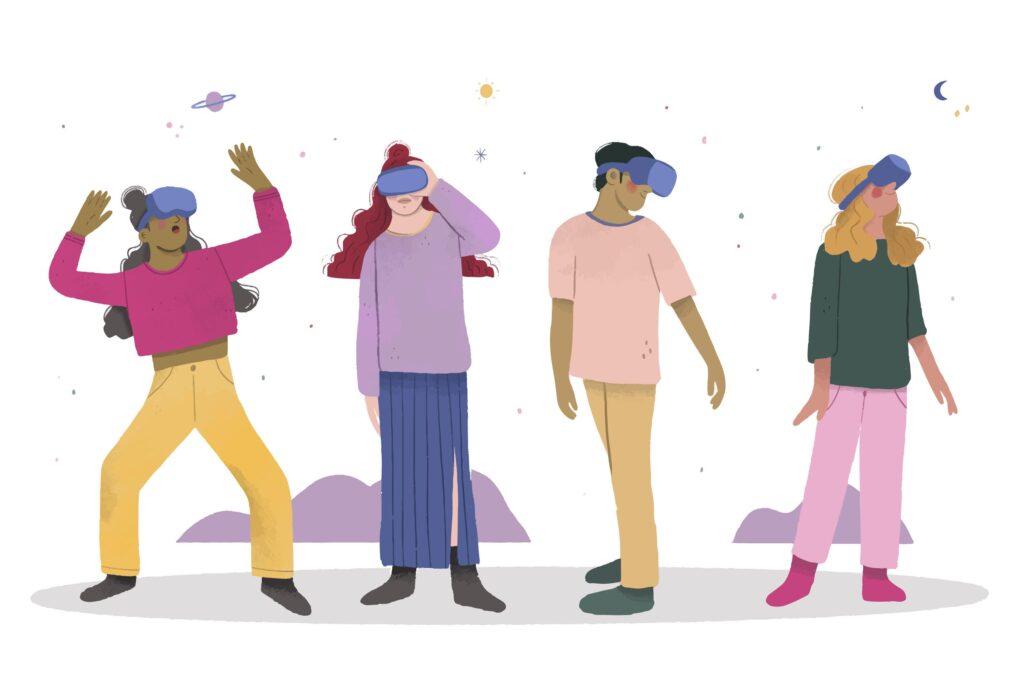
Table of Contents
The History of Humans and Storytelling
Although nobody alive today was there to witness storytelling of the past, it is said to be as old as language itself. From ancient cave paintings to primitive poetry, stories have been central to how humans communicate and make sense of the world. The evolution from language to drawings, drawings to symbols, and symbols to modern writing enabled us to preserve stories across generations and document our history. Stories have the power to connect generations and shape cultures. They can also transform a brand into something more than just the product it sells, into an experience people can emotionally connect with.
What is Storytelling in Content Creation?
Storytelling in content creation is about the articles, videos, and other media that combine to form your brand image. Rather than simply sharing your product or services, storytelling content creates plots and characters, evoking emotion within your target audience to get them to connect with you. This approach turns your brand into something memorable, going beyond promotion and focusing on an authentic connection between humans to create a lasting impression.
Why Storytelling Matters For Your Brand
Storytelling is a powerful tool for building trust, connecting with your audience on a deeper level and an excellent marketing strategy to attract potential customers.
The Science Behind Memorable Stories
Great storytelling activates multiple areas of the brain, making information easier to understand. Your language processing, sensory cortex, emotion centres and memory functions all come to life through stories. This chemical connection helps audiences retain key messages long after the story is told.
Emotional Connection & Brand Loyalty
When brands share authentic stories about their origins, values, or the people they serve, they become more human and relatable. In a world overflowing with content, authenticity and transparency cut through the noise. By telling genuine stories, brands can build emotional connections that foster trust, loyalty, and lasting impact.
Key Elements of Effective Storytelling in Content Creation

Structure and Narrative Techniques
All great stories follow the simple structure of beginning, middle, and end. They feature relatable characters, conflict, and a resolution. A brand’s story will tell the origins of how the business began, giving insight into the dream or happy accident that created the brand as we know it today. You might choose to follow the journey of a customer or a product. As long as you’re sharing a real journey, no matter how big or small, you’re already storytelling through your content.
Visual Storytelling
Visual storytelling focuses on images, videos, and infographics to tell your story. Humans process visuals faster than text, and emotionally resonant images can deepen audience connection. As they say, a picture is worth a thousand words. We can see the proof on platforms like TikTok or Instagram, which rely on attention-grabbing visuals to drive engagement.
Effective Brand Narrative Examples

Lego’s Storytelling for All Ages
Lego excels at storytelling by creating immersive worlds, encouraging community participation, and leveraging personalisation to speak to a wide range of audiences. Campaigns like the LEGO Superpower Academy invite audiences to build their own stories, share experiences, and connect with the brand across generations. LEGO engages and inspires its audience by blending character creation, visual appeal, and strategic storytelling.
Nike’s Aspirational Storytelling
Nike’s storytelling technique is built around empowerment, inclusivity, and perseverance. A great example of this is their campaign “Dream Crazy”, using their iconic slogan “Just Do It” with relatable characters and emotional narratives that inspire action. By highlighting both elite athletes and ordinary people, Nike’s stories make greatness feel attainable, sparking conversations and fostering deep loyalty from their customers.
How to Incorporate Storytelling into Your Content Strategy
Define Your Brand Story
Begin by clarifying your brand’s mission, values, and unique journey. Ask yourself, what sets you apart from everyone else? Why do you do it? Setting these foundational elements will help to shape every story you tell.
Be Authentic
Share real experiences, challenges, and successes. Audiences are drawn to honesty, so a genuine, compelling story that resonates will build trust and credibility in your brand.
Use Customer Testimonials as Stories
Turn customer experiences into narratives. Case studies and testimonials, told as stories, showcase the real-world impact of your brand and make it desirable to potential new customers.
Curate & Collaborate with Experts
Partner with industry experts, creators, or influencers to give your stories further credibility. Collaboration expands your reach whilst bringing in fresh perspectives. In May 2025, Nike and Lego came together to take their storytelling to the next level by combining being active with creative play with their global multi-year partnership.

Measure & Refine Your Storytelling
Learn to tailor your stories based on engagement, shares, and conversations. Understanding what stories resonate the most with your audience will help steer your storytelling and evolve your content alongside your audience. Use data to guide your approach and stay open to the insights it reveals, even if they challenge your assumptions.
The Future of Storytelling in Content Creation

As content platforms continue to evolve, storytelling will remain at the heart of effective brand communication. Emerging technologies such as AI, immersive 360 experiences, and interactive storytelling, which we’ve already seen on platforms like Netflix’s groundbreaking ‘Bandersnatch’, will continue to offer new ways to connect with people. At Solve, integrating storytelling with SEO ensures that compelling narratives stay discoverable, driving both engagement and visibility, with human connection at the centre of everything.
Solve Storytelling & SEO
Combining SEO and storytelling means your stories reach the right people at the right time. We use keyword research to inform narratives that connect with audiences, helping brands communicate their values, showcase their impact, and build lasting relationships.
FAQ’s
Why is storytelling so powerful?
Storytelling taps into human psychology, making information memorable and relatable. It evokes emotion, builds trust, and inspires action, which makes it an extremely effective tool in brand messaging.
What is the role of storytelling in content creation?
Storytelling transforms content from information into engaging narratives that connect with audiences on a personal level. Ultimately, humans like to connect with other humans, and understanding the person behind the brand helps us do that!
What is the power of storytelling in content writing?
The power of storytelling in content writing lies in its ability to captivate, persuade, and motivate. Well-told stories help brands stand out, foster loyalty, and drive measurable results, from an increase in engagement to higher sales.
Elevate your storytelling in content creation with Solve’s expert content writers, ready to craft compelling narratives that make an impact.





